Invest
How much should you pay to visit the GP?
Australians visiting their local GP are willing to pay more for a longer consultation time or a shorter waiting time, according to new research.
How much should you pay to visit the GP?
Australians visiting their local GP are willing to pay more for a longer consultation time or a shorter waiting time, according to new research.

A study by Monash University has revealed a new modelling system which allowed Australians to choose how much they would pay for a visit to the GP.
The survey of 1,457 Australians found that 39 per cent of patients would prefer to set their own out-of-pocket payment than to be bulk billed or pay the compulsory gap that many GPs currently charge.
According to Associate Professor Duncan Mortimer from the centre of health economics, the proposal does not mean GPs would see patients for “free”.
The GP would continue to get the Medicare rebate for each patient. It is the out-of-pocket or gap payment that would then be determined by the patient.
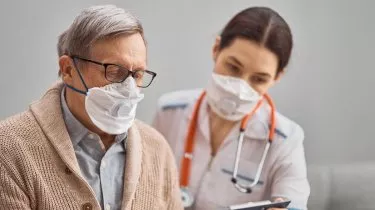
“Our results suggest that patient-chosen prices for primary care could generate an extra $1.48 billion in revenue and incentivise patient-centred care without the need for complex ‘outcomes-based funding’ formulae,” Associate Professor Mortimer said.
Co-author Dr Daniel Epstein, a GP and PhD student at Monash’s Department of General Practice, said that on average the survey showed that patients would be willing to make voluntary and patient-chosen payments of $25 in return for shorter waiting times and longer consultations.
However, the survey result revealed a social divide, with people with money willing to pay for these shorter waiting times and longer consultations.
“Given the choice, women in more affluent areas were more willing to pay a little extra, while men in disadvantaged areas were more likely to stick with bulk-billed services,” Dr Epstein said.
According to the researchers, GP groups have long argued the Medicare rebate is insufficient to cover costs, and that it doesn’t reflect the value of GP visits to patients.
Dr Epstein said a patient-chosen gap payment could provide a happy medium between compulsory out-of-pocket payments and bulk billing.
“There’s always a fine balance between providing good patient-centred GP care without limiting access to people based on their ability to pay,” he said.
“Patients’ willingness to make voluntary contributions may come as a surprise. Our research found, given the choice, women in more affluent areas were more willing to pay a little extra, while men in disadvantaged areas were more likely to stick with bulk-billed services.”
About the author

About the author


Spending
Moneysmart study reveals Gen Z women more concerned about finances than men
A new research conducted by ASIC’s Moneysmart has unveiled the heightened levels of stress and concern regarding finances and the cost of living among Australian Gen Z women compared to their male ...Read more

Spending
The cost of politeness: Aussies out of pocket by $1,350 due to 'awkward tax'
It's the time of year when Australians dive into their pockets for festive events and gatherings, yet a recent study by PayPal suggests that many are too polite, or perhaps too embarrassed, to ask for ...Read more
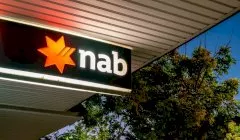
Spending
Aussies can ‘NAB Now Pay Later’ with the last major bank to embrace BNPL
NAB has become the latest bank to enter the BNPL market. Read more
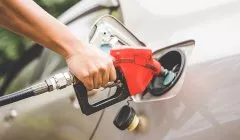
Spending
Aussie households spent $368 a week on transport after petrol price surge
Fuel costs have increased by 40 per cent over the past year, a new report from the Australian Automobile Association has revealed. Read more
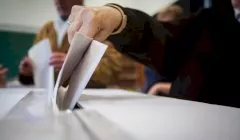
Spending
Voters say reducing the cost of living should be the government’s top priority
Aussies have ranked high cost of living as the top issue that needs to be addressed by the next government. Read more

Spending
Bodies back Labor’s commitment to stronger BNPL regulation
All parties should commit to stronger regulations for the BNPL sector, according to Financial Counselling Australia. Read more

Spending
Household spending surges led by retail and recreation
Spending on retail, recreation and hospitality have continued to climb as COVID-19 case numbers and restrictions have eased. Read more
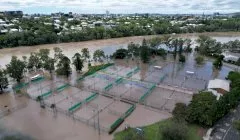
Spending
Banks extend financial assistance to flood-affected customers
A range of assistance is available from major banks to those impacted by flooding in NSW and Queensland. Read more

Spending
Moneysmart study reveals Gen Z women more concerned about finances than men
A new research conducted by ASIC’s Moneysmart has unveiled the heightened levels of stress and concern regarding finances and the cost of living among Australian Gen Z women compared to their male ...Read more

Spending
The cost of politeness: Aussies out of pocket by $1,350 due to 'awkward tax'
It's the time of year when Australians dive into their pockets for festive events and gatherings, yet a recent study by PayPal suggests that many are too polite, or perhaps too embarrassed, to ask for ...Read more

Spending
Aussies can ‘NAB Now Pay Later’ with the last major bank to embrace BNPL
NAB has become the latest bank to enter the BNPL market. Read more

Spending
Aussie households spent $368 a week on transport after petrol price surge
Fuel costs have increased by 40 per cent over the past year, a new report from the Australian Automobile Association has revealed. Read more

Spending
Voters say reducing the cost of living should be the government’s top priority
Aussies have ranked high cost of living as the top issue that needs to be addressed by the next government. Read more

Spending
Bodies back Labor’s commitment to stronger BNPL regulation
All parties should commit to stronger regulations for the BNPL sector, according to Financial Counselling Australia. Read more

Spending
Household spending surges led by retail and recreation
Spending on retail, recreation and hospitality have continued to climb as COVID-19 case numbers and restrictions have eased. Read more

Spending
Banks extend financial assistance to flood-affected customers
A range of assistance is available from major banks to those impacted by flooding in NSW and Queensland. Read more









